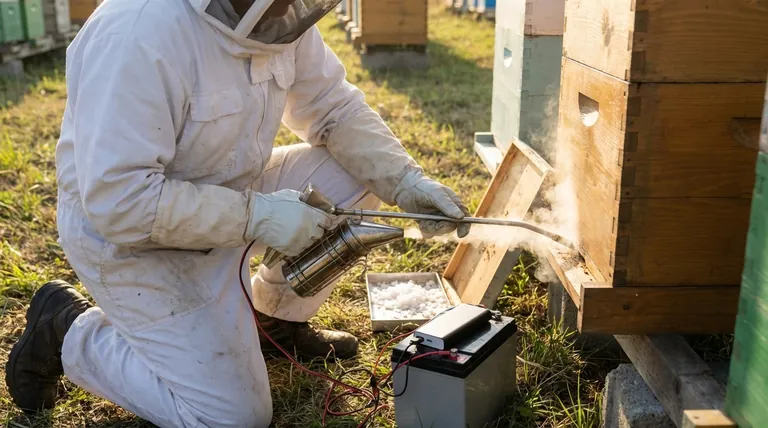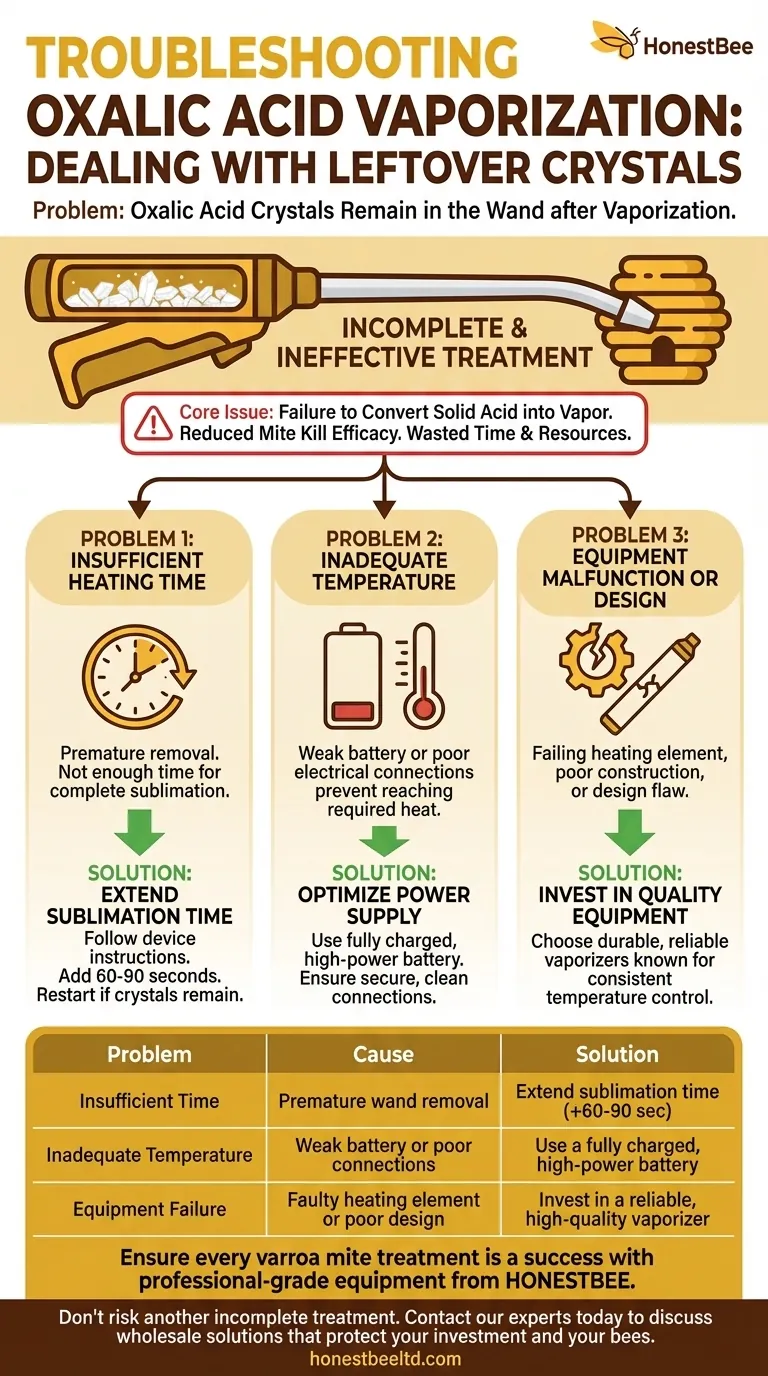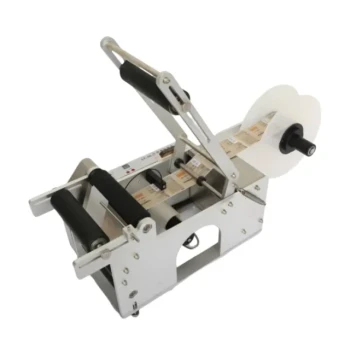To address oxalic acid crystals remaining in the wand, you must first leave the vaporizer in the hive longer to allow for complete sublimation. If crystals consistently remain after extending the time, this is a clear indicator that your vaporizer is not reaching or maintaining the correct temperature and may be malfunctioning.
The presence of leftover crystals means the varroa mite treatment was incomplete and ineffective. The core issue is always a failure to convert the solid acid into vapor, which stems from either insufficient time, insufficient heat, or faulty equipment.

Diagnosing the Root Cause of Leftover Crystals
When you find unvaporized oxalic acid, you are seeing a failed treatment. The goal is to understand why the sublimation process was cut short. There are three primary culprits to investigate.
Problem 1: Insufficient Heating Time
The conversion of oxalic acid crystals into vapor is not instantaneous. It requires a specific amount of time at the correct temperature.
Many beekeepers, especially when treating multiple hives, may remove the wand prematurely. The reference standard is often around two minutes, but you must follow the specific instructions for your device.
Problem 2: Inadequate Temperature
Even if you leave the wand in for the correct duration, it may not be getting hot enough. This is a common point of failure.
A weak battery is the most frequent cause. Vaporizers draw significant power, and a partially discharged or old battery will fail to supply the necessary current to maintain temperature.
Poor electrical connections between the battery and the wand can also restrict power flow, preventing the device from heating properly.
Problem 3: Equipment Malfunction or Design
Not all vaporizers are created equal. An inexpensive or poorly constructed wand may lack the power or durability to heat consistently.
If you have ruled out time and power supply issues, the vaporizer itself is the likely problem. It may have a failing heating element or a fundamental design flaw that prevents it from reaching the required temperature under load.
The Impact of an Incomplete Treatment
Leaving crystals behind is more than just an inconvenience; it directly compromises the health of your colony.
Reduced Mite Kill Efficacy
The entire purpose of the treatment is to fill the hive with oxalic acid vapor, which kills phoretic mites.
If a significant portion of the acid dose remains in the wand, the vapor concentration in the hive will be too low to be effective. This results in a failed treatment and allows the varroa population to continue growing.
Wasted Time and Resources
You will have spent time, effort, and the cost of the oxalic acid for a negligible benefit. More importantly, it creates a false sense of security that your mites are under control.
Understanding the Trade-offs in Equipment
The problem of leftover crystals often traces back to the vaporizer itself. Choosing the right tool involves balancing cost against performance.
Cost vs. Reliability
Less expensive wands are often more susceptible to the very issues that cause incomplete vaporization. They may have less robust heating elements or thinner wiring.
A more durable, albeit more expensive, vaporizer is an investment in treatment consistency and reliability. If your current wand is a consistent source of problems, it is not saving you money.
Functionality and Safety
Look for a wand that not only heats effectively but also allows for safe and efficient handling. Some models are designed to be cooled quickly in a bucket of water.
This feature allows you to move from one hive to the next without a long cooldown period, improving your workflow and reducing the risk of accidental burns.
How to Ensure a Successful Treatment
The goal is a clean wand after every treatment. A systematic approach will eliminate the variables that lead to failure.
- If your primary focus is treatment effectiveness: Always pre-heat your wand for the manufacturer's recommended time and ensure your power source is fully charged and delivering adequate voltage.
- If your primary focus is efficiency and reliability: Invest in a high-quality vaporizer known for consistent temperature control and durability, as this prevents most common treatment failures.
- If you discover leftover crystals during treatment: Immediately restart the process, leaving the wand in for an additional 60-90 seconds and ensuring the hive entrance is properly sealed.
Executing a proper oxalic acid vaporization is a critical step in maintaining a healthy, productive honey bee colony.
Summary Table:
| Problem | Cause | Solution |
|---|---|---|
| Insufficient Time | Premature wand removal | Extend sublimation time (e.g., +60-90 seconds) |
| Inadequate Temperature | Weak battery or poor connections | Use a fully charged, high-power battery |
| Equipment Failure | Faulty heating element or poor design | Invest in a reliable, high-quality vaporizer |
Ensure every varroa mite treatment is a success with professional-grade equipment from HONESTBEE.
A failed treatment wastes time, money, and leaves your colonies vulnerable. For commercial apiaries and distributors, consistent results are non-negotiable. HONESTBEE supplies durable, high-performance beekeeping supplies and equipment designed for wholesale operations, providing the reliability you need for effective oxalic acid vaporization.
Don't risk another incomplete treatment. Contact our experts today to discuss wholesale solutions that protect your investment and your bees.
Visual Guide

Related Products
- Adjustable Formic and Acetic Acid Dispenser for Bee Mite Treatment
- Professional Galvanized Hive Strap with Secure Locking Buckle for Beekeeping
- High Quality Honey Dehumidifier Dryer Thickening Machine for Beekeeping
- Economy Small Scale Honey Dryer Dehumidifier Thickening Machine
- Honey Concentrating Vacuum Heating Thickening Machine Dehumidifier for Honey
People Also Ask
- What is the focus of hive management during summer? Maximize Your Honey Harvest with Expert Tips
- How do Varroa mites spread between honey bee colonies? Stop Mite Transmission in Your Apiary
- How can beekeepers ensure their hives survive the winter? A Guide to Colony Survival
- What is the optimal time for varroa mite control in nucs? Maximize Efficacy with Perfect Timing
- What are some common predators and pests that target beehives? Protect Your Hives from Bears, Mites, and Beetles



















